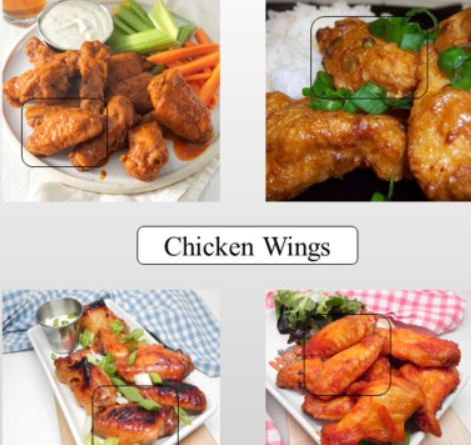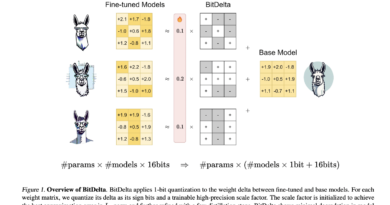Food Recommendation Models Using Deep Learning
In today’s digital age, where endless recipes and culinary inspiration are just a click away, finding the perfect dish to suit your taste preferences and dietary restrictions can feel overwhelming. Luckily, advancements in artificial intelligence, specifically deep learning, have paved the way for innovative food recommendation models that can make this task easier than ever before. In this article, we will explore the world of food recommendation models using deep learning and uncover how they work their advantages, and their potential impact on the culinary world.
Understanding Deep Learning
Deep learning is a subset of machine learning that focuses on training artificial neural networks to perform tasks by learning from large amounts of data. These neural networks consist of interconnected layers of nodes that process input data and progressively learn to recognize patterns and make predictions. Unlike traditional machine learning algorithms, deep learning models can automatically extract meaningful features from raw data, making them particularly well-suited for complex tasks such as image recognition and natural language processing.
When it comes to food recommendations, deep learning models can be trained to analyze and interpret various types of food-related data, such as images, text, and user preferences, to provide personalized and accurate recommendations. In particular, convolutional neural networks (CNNs), a type of deep learning architecture, have proven to be highly effective in tasks such as image classification and object detection. By processing food images through multiple layers of convolutional and pooling operations, CNNs can extract hierarchical features that capture the spatial relationships between pixels, enabling them to accurately identify ingredients and food items.
Building a Food Recommendation Model
To build a food recommendation model using deep learning, a multi-step pipeline approach can be followed. Let’s dive into each step:
1. Data Collection and Preprocessing
The first step in building a food recommendation model is to acquire a large dataset of food-related data, such as images, recipes, and user preferences. This dataset will serve as the training data for the deep learning model. The food images can be obtained from various sources, including online recipe databases, food blogs, and social media platforms.
Once the dataset is collected, preprocessing steps are applied to ensure consistency and quality. This includes resizing the images to a uniform size, applying normalization techniques to ensure consistent lighting and color, and augmenting the dataset by introducing variations in the images to increase diversity and robustness.
2. Model Selection and Training
The next step is to choose a suitable deep learning model architecture for the food recommendation task. This can include various types of neural networks, such as CNNs, recurrent neural networks (RNNs), or transformer models, depending on the nature of the data and the specific requirements of the recommendation system.
Once the model architecture is selected, the deep learning model is trained on the preprocessed dataset. During the training process, the model learns to recognize patterns and features in the food images and associate them with corresponding recipes or food categories. Techniques such as transfer learning, where a pre-trained model is fine-tuned on the specific task, can be used to improve the model’s performance and efficiency.
3. Feature Extraction
After the deep learning model is trained, the next step is to extract high-level features from the trained model. These features capture semantic information about the ingredients, flavors, and overall composition of the food images. Techniques such as feature extraction from the last convolutional layer of the CNN model or using embeddings trained specifically for food-related data can be employed to obtain these features.
4. Recipe Representation and Matching
Once the features are extracted, each recipe in the database is encoded into a vector representation. This can be achieved through methods like bag-of-words or using embeddings trained specifically for recipe text. The similarity between the feature vector of the input food image and the vector representations of recipes in the database is then calculated using metrics such as cosine similarity or Euclidean distance.
Based on the similarity scores, the food recommendation model ranks the recipes and provides a set of top k recommendations to the user. This ranking can be further refined by considering additional factors such as user preferences, dietary restrictions, and ingredient availability.
5. Evaluation and Optimization
To ensure the effectiveness and relevance of the food recommendation model, it is important to evaluate its performance using appropriate metrics such as precision, recall, and F1-score. This evaluation can be done against a held-out validation set or through user studies and feedback.
To optimize the model’s performance, hyperparameter tuning techniques such as grid search or Bayesian optimization can be employed. Fine-tuning the learning rate, batch size, and optimization algorithm can significantly improve the model’s recommendation accuracy and user satisfaction.
Advantages of Food Recommendation Models Using Deep Learning
Food recommendation models using deep learning offer several advantages that can significantly enhance the culinary experience for users:
1. Personalized Recommendations
By leveraging deep learning techniques, food recommendation models can provide personalized recommendations based on individual preferences, dietary restrictions, and ingredient availability. This ensures that users receive suggestions that align with their specific needs and tastes.
2. Real-Time Suggestions
Deep learning models enable instantaneous processing of food images, allowing for real-time recipe recommendations. This empowers users to make informed cooking decisions on the fly, making the cooking process more efficient and enjoyable.
3. Reduction of Food Waste
One of the major benefits of food recommendation models is their ability to reduce food waste. By suggesting recipes based on the ingredients users already have, these models help prevent perfectly good food from going to waste. This not only saves money but also contributes to a more sustainable and eco-friendly lifestyle.
4. Culinary Exploration and Inspiration
Food recommendation models can introduce users to new recipes, ingredients, and cooking techniques they may not have considered before. By recommending diverse and innovative dishes, these models encourage culinary exploration and inspire users to try new flavors and cuisines.
Conclusion
Food recommendation models using deep learning have the potential to revolutionize the way we discover and interact with food recipes. By leveraging the power of artificial neural networks and computer vision, these models offer personalized and accurate recommendations based on ingredient images, user preferences, and dietary restrictions. They empower users to explore new culinary horizons, reduce food waste, and make informed cooking decisions in real time. As this technology continues to evolve, we can expect even more sophisticated and intuitive food recommendation systems that cater to individual tastes and preferences.
Also, don’t forget to follow us on LinkedIn. Do join our active AI community on Discord.
If you like our work, you will love our Newsletter 📰




